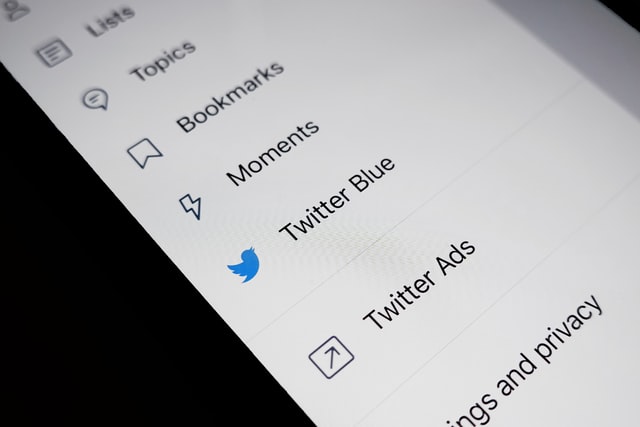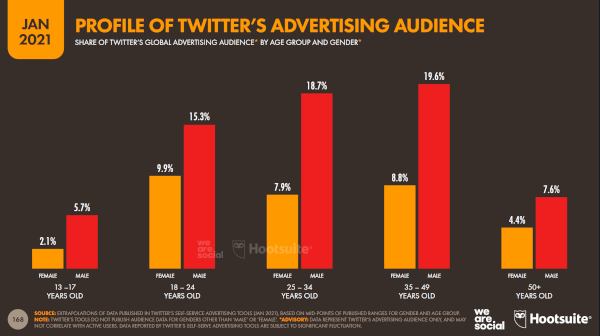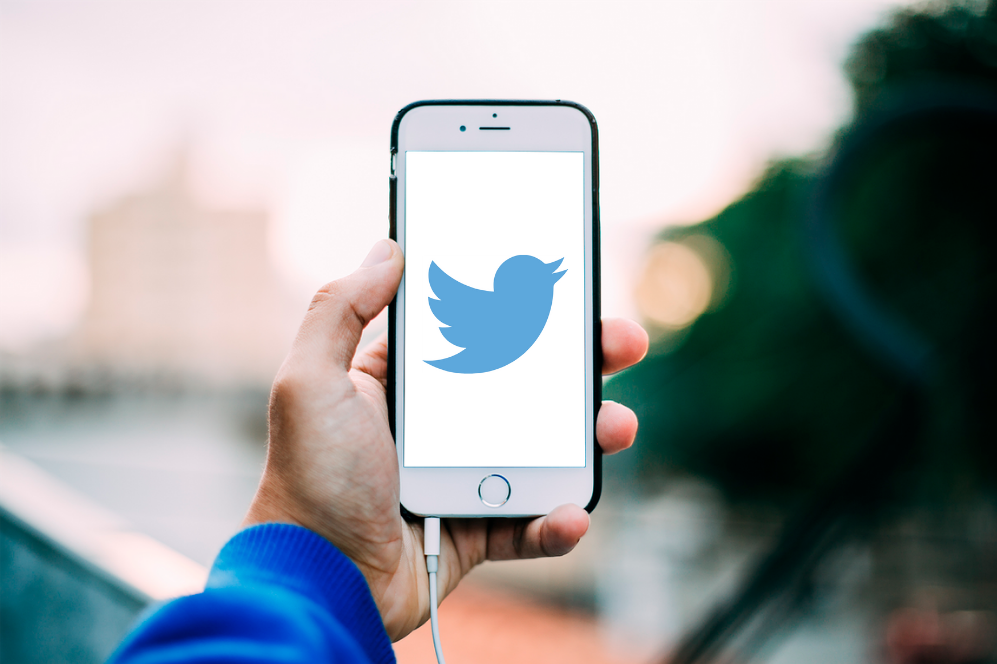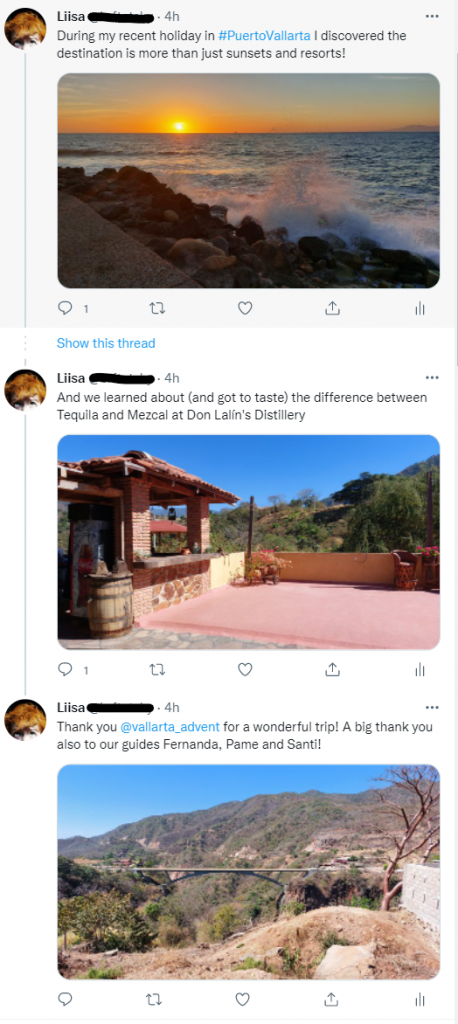Twitter for Tourism Businesses

If you are studying tourism in 2022 it is likely you have not even signed-up to Twitter. Yet, working in the tourism industry, you may very well find great use in this platform. To help you with your predicament I have collected the most important information when using Twitter for Tourism Businesses.
Twitter for Tourism – is it still relevant?
As surprising as it may be the answer is: yes! Even if it seems to you like no one is on Twitter it is important to remember that each social media platform has its unique purpose. You may think Instagram and TikTok are taking over, but Twitter still has a loyal following. The question is: How you can you utilize Twitter for Tourism Businesses?
Who can your tourism business reach with Twitter?

Twitter’s following lies broadly between the ages of 18-49, however the age group 35-49 is represented the most. Maybe you understand now why I assumed someone studying in 2022 may not own a Twitter account. Another statistic you might want to bear in mind is that the majority of Twitter users are male. If you want to share fashion trends for travelling you’re better off with Instagram or Pinterest.
Now that we know who we can reach on Twitter it is time to ask the next question.
How should you interact with your followers?
While Instagram captures your attention with images and TikTok gets even your grandma rocking, Twitter has its unique benefits. If you don’t care for streams of videos and images’ and don’t have the time for long texts Twitter is for you!
Another selling point for Twitter is that it offers you more variety. While it may not excel at displaying images and videos you can attach both to your Tweets and, unlike Instagram, you can link to other sites.
All of the above are reasons why those who use Twitter appreciate it so much. For you it is important to understand your users in order to fully engage them online.
What content should your tourism business share on Twitter?

Twitter is the fastest of the social media platforms. The texts are short and there is a massive volume of them, so a tweet only has a half-life of about 18 minutes. The half-life is increased by retweets, comments, likes and other user engagement. It is crucial that you find ways to engage your audience.
Twitter for tourism works best when you are providing quick information. People use it to get tips for activities or accommodation, or to discover the location where a photo was taken. While I don’t use Twitter much myself I did start to see the appeal of it in researching this article.
3 Dos (and Don’ts) when using Twitter for your Tourism Business
Do use hashtags! They are your way to being discovered on Twitter. However, you should only pick one or two hashtags. Select them with the same care you would keywords for an ad campaign. #Do #not #hashtag #every #word #in #your #post or your customers will soon flee from you!
Do tweet multiple times per day! As mentioned before the half-life of a tweet is short. Posting a lot is not just accepted, rather it is a must if you want to stay relevant and seen. Do not post irrelevant or spammy texts. See what is trending and share your opinion. Retweeting and adding your own commentary is also a way to stay engaged with your audience.
Do answer in a timely manner! Your followers may use Twitter to reach out to you and ask questions, to provide feedback or to complain. When they do it is important that you answer as soon as possible but no later than one business day. Bear in mind, that your reply may have a wide audience and could impact on the relationship you have with future customers.
Some Personal Views on using Twitter for Tourism Businesses

I am not one to use much social media. For the most part I am an observer rather than a creator. Particularly Twitter I have not used much at all and whenever I do give it another try, I end up deleting all my posts a month later. I don’t think I am alone in that as I found one source stating that 10% if Twitter users are responsible for 80% of tweets though I am not sure how true it is.
Considering the fast speed and reach I did see the benefit of Twitter for a Tourism Business, though. As a user it is simple to ask a question and get a reply and I think as business this could be utilized for sharing information. The hashtags make it easy to locate tweets about a particular destination or business. The business can then respond to questions directly and cultivate a more personal relationship with individuals which can also be observed by the public.
Summary or TL;DR
As a tourism business you should not dismiss Twitter as marketing tool. However, Twitter should certainly not be the only way to reach out to your potential customers. I also have my doubts if a small or micro sized business has the capacity to tweet several times a day. My advice would be to look into Twitter once you can afford to hire a social media manager.
If you are still unsure about Twitter and would like to see how others use Twitter for Tourism Businesses check out this list of Travel Twitter accounts curated by @Lisekit.
If I have convinced you, but you do not yet have a Twitter account, watch the below video in which I show you how to create your account and switch on analytics in 5 minutes.
Thank you for reading till the end!
I couldn’t have written this article without Hootsuite – check out our blog post dedicated to this useful tool to find out what they do as well.
Lastly, before you go let me know in the comments what your thoughts are on using Twitter for Tourism Businesses!
Sources:
https://blog.hootsuite.com/twitter-demographics/
https://www.hootsuite.com/pages/digital-trends-2021#c-274407
https://www.hootsuite.com/resources/digital-trends
https://breaktheicemedia.com/twitter-tourism-best-practices/
https://www.salonprivemag.com/why-twitter-is-still-relevant-in-2022/
Thank for your informative and stimulating post. It was also a nice personal touch to include some of your own touristy tweets as examples.
Key takeaways for me were the ability to use links (unlike Instagram), and the usefulness of Twitter as a kind of ‘rapid response’ tool for customer interaction.
It might be of interest to note that Hootsuite emerged out of a dashboard developed solely for Twitter. And although I can’t verify if personally, I read that the Hootsuite analytics dashboard currently implemented for Twitter accounts is excellent and unrivalled by competing products, which shouldn’t be surprising based on its pedigree.
From the viewpoint of a social media abstainer, your post strengthens my conviction that a judicious combination of these networks is nevertheless increasingly important for tourism businesses, as you’ve indicated.
Hi Nigel,
I was unaware that Twitter and Hootsuite share a common history so thank you for your comment. I also found during my research that Twitter is the only social media platform which has a opt-in rather than opt-out policy when it comes to collecting analytics.
What struck me perhaps the most is how solidified Twitters existence appears to be, at least in the US, Japan and other countries where it has been popular since its early days. When I set out to write this article I was convinced that it would be difficult to find reasons to even have a Twitter account but as it can be used almost as a global forum or, in a more dramatic form, a mythical oracle into which you can shout your question, it does appear to have its place in the world.
As said, I think it depends on the size of the business and perhaps the industry or customer base how useful Twitter is in a company’s marketing strategy but as of yet it should not be ignored altogether.
Hi, Liisa!
Ah, Twitter. The atmosphere isn’t always the greatest, but it’s the one social media app I’ve checked daily for over a decade now. Seems like I’m in the minority here 😊 However, I’ve never used it for business or tourism purposes, so this was an interesting read indeed.
I think Twitter’s strengths lie in its variety, as you said. You can post texts, still images, gifs, videos, you can live stream, create audio spaces, send direct messages, add links, create lists, retweet with or without quotes, etc. I also think Twitter is a good platform to market in a fun, personal way. For example, I’ve seen many official American brand accounts join in jokes they’re mentioned in. So, I agree with you that it’s easy for businesses to cultivate more personal relationships there.
Thank you for this informative blog post!
Hi Sanna,
Thank you for your comment!
It is great to hear the perspective of someone who is actually using the app! 🙂
I read that many people use Twitter to keep informed about news though I haven’t quite figured out how to use it myself.
I am considering, however, to revive my account once again – which I have done in any case for this post – and give it another try. I think Twitter seems to have a more fact-driven or at least no BS, straight to the point kind of audience that I can relate to better perhaps than to the many “beauty”-driven posts on Instagram.
I like your point about using Twitter to market in a personal and fun way. I did read or hear recently – perhaps in HubSpots Social Media Marketing course – that social listening and inbound marketing can be used in instances where something is not working for a competitor – to respect and show empathy with the competitor while still showing that your business is available to help customers in the meantime. Being able to join in a laugh, even when it is directed at the company, surely is a way to show customers that your business is humble and not taking itself too seriously.
Hi Liisa!
I got really interested from your blogpost because I have to admit I’ve never thought about twitter as a platform suitable for a tourism business.
You actually start writing “If you are studying tourism in 2022 it is likely you have not even signed-up to Twitter.”…and that’s true!😅
Of course, as a tourism company, if possible, the best is to have different channels for the different target audience you have. TikTok can be the perfect one for teenagers or people on their twenties, but twitter is still a very good chance for people of the age group 35-49 is represented the most as you write in your blogpost.
And another good analysis that you reported is that Twitter audience are mainly man, so you can try to minimize the “fashion trends for travelling” for that platform.
And last point: be short and right hashtag.
Thank you for your informative blogpost and the tips you gave! Great work!
Thank you very much for this very interesting article. I find it very endearing and more smiles appeared in my face while reading. I really appreciate your simple sense of humor. Thank you for the so much information you have provided us. The statistical table helps to better visualize the target audience of the social media. A really well done job 😊
I personally don’t use Twitter. I find the 140-character restriction very restrictive. I prefer to read more articulated texts. Maybe I would use it to read the news in real time. I wouldn’t even think of using Twitter for tourism purposes. But I think it would be a really suitable platform for a DMO, which could post every day various anecdotes or stories about a destination, sponsor current and future events (a sort of bulletin board). I believe there will be various other ways of using Twitter for tourism purposes in the future.
Hi Federico and thanks for commenting!
You make a great point mentioning DMOs!
I did not even consider it but, if done right, I am sure there is an opportunity to use Twitter in storytelling for smaller destinations such as the Torne river valley (Northern Lights Route). With twitters option to create feeds it opens the option to share snippets of a story which, when stitched together, create one larger story. This could be a great way to create anticipation and perhaps even get the audience involved in telling the story. Why not start with a common myth of the region and ask followers to write the next section of the story and so on?
Hi Liisa,
Twitter is a content-rich platform that I like to use so much, although I haven’t fully explored its functionality yet. Now I can understand a little more.
I never knew these positive effects of Twitter on tourism. It will be convenient to be able to post and manage social media data at the same time using a combination of Hootsuite and Twitter.
Thanks for the informative blog post!
Hi July and thank you for your contribution!
I am glad I was able to give you new insights with my post despite you being a Twitter veteran. I agree, there is so much versatility to Twitter and my list is by no means exhaustive! This was just supposed to be a short glimpse into Twitter for those who are new to the platform.
If you ever end up using Twitter for tourism I would love to hear about your experience! 🙂
What a lovely, informative and entertaining post!
To your commentor. the tweet length is nowadays limited to 280 characters, yet the normal length is still well below the former 140-character limit.
Twitter is also great for networking, or getting info on latest research and trends. Also, there are great examples of Twitter use in customer service. For example, when the volcano erupted in Iceland long ago :-), airlines would help their customers to get back home via Twitter because all phonelines were busy!
Hi Outi and thank you for your tips!
I did not realise Twitter was also used for networking (I would have expected LinkedIn to be the go-to for that) and getting info on up-to-date research. It is truly a very handy tool to have in one’s back-pocket. I can tell only from my own experience and at least in my circles it seems Twitter is grossly underrated.
Perhaps we, as humans, get to quickly distracted by new shiny things so it is no wonder that TikTok is currently rising to the lead. After my research, though, I cannot imagine Twitter to leave the market any time soon. Like paper-back books, I imagine it will have a loyal following for some time.
Hi, Liisa!
So interesting reading about your blog and about how useful Twitter can be in a Tourism Business. I have to say that I am not a regular user of this platform and I tend to think that is older people who use it the most, which might be not accurate but your graph shows it it kind of true. I have always heard of Twitter like this platform where people offend and argue and where famous people also might be more clear in some subjects.
Anyways, I see there is also a very useful side and I agree with the matter of hiring a social media manager in this case. I guess other platforms do not require that much interaction daily but it can also be very convenient from the customer’s point of view having such direct contact with a company.
Thank you for all the given information!
Hi Stella and thank you for reading and commenting! 🙂
I agree with you, I think for personal use I see the biggest benefit in reaching out to companies and asking questions, especially during times where you may not have time to wait on the phone or in a chat queue until you get through to customer support. You can send your question and get back to work and once the company replies you will get a notification on your phone.
I do think the audience is older on Twitter which is not necessarily a bad thing. Once your business has segmented their audience and picked those who segments which are relevant you can target your customer interaction depending on the social media platform. Your post in Twitter can talk to an older audience than you posts in Instagram or TikTok.
I do find it interesting that many do not put much weight on age when it comes to creating customer personas, however, as we can see when looking at the demographics of these social media platforms age does have a not insignificant impact. So if my customer persona is 40 they are more likely to be on Twitter, whereas if my customer persona is 18 they are more likely to on TikTok.
Thanks again for your though-provoking comment! 🙂
Hi! Thank you for this informative and entertaining post. I really liked your personal perspective on Twitter and your own examples as well. I am not a Twitter user so for me, it is a new world:)
To my opinion, every tool has marketing and selling potential if there are many viewers involved. I have noticed that many local tourism companies use Twitter for their business operations. So, probably it does make sense to use it after the most popular social media apps.
Great interaction with the reader and CTA, well done!
Hi Liisa,
thank you for this informative blog post! 😀
I have to admit I have never used Twitter before and its whole existence is like a mystery to me…but after having gone through your very well structured, visual and entertaining post I think I got a much better idea of the App in general!
I especially appreciated the TL;DR section to give a nice summary to the topic again, and of course videos always are a benefit in my opinion, so thanks for adding that as well!
All in all I can say this was really informative for me personally, and I might as well dig deeper into the topic or actually start using Twitter as it is evidently a useful marketing tool!
All the best
Magdalena/Malla